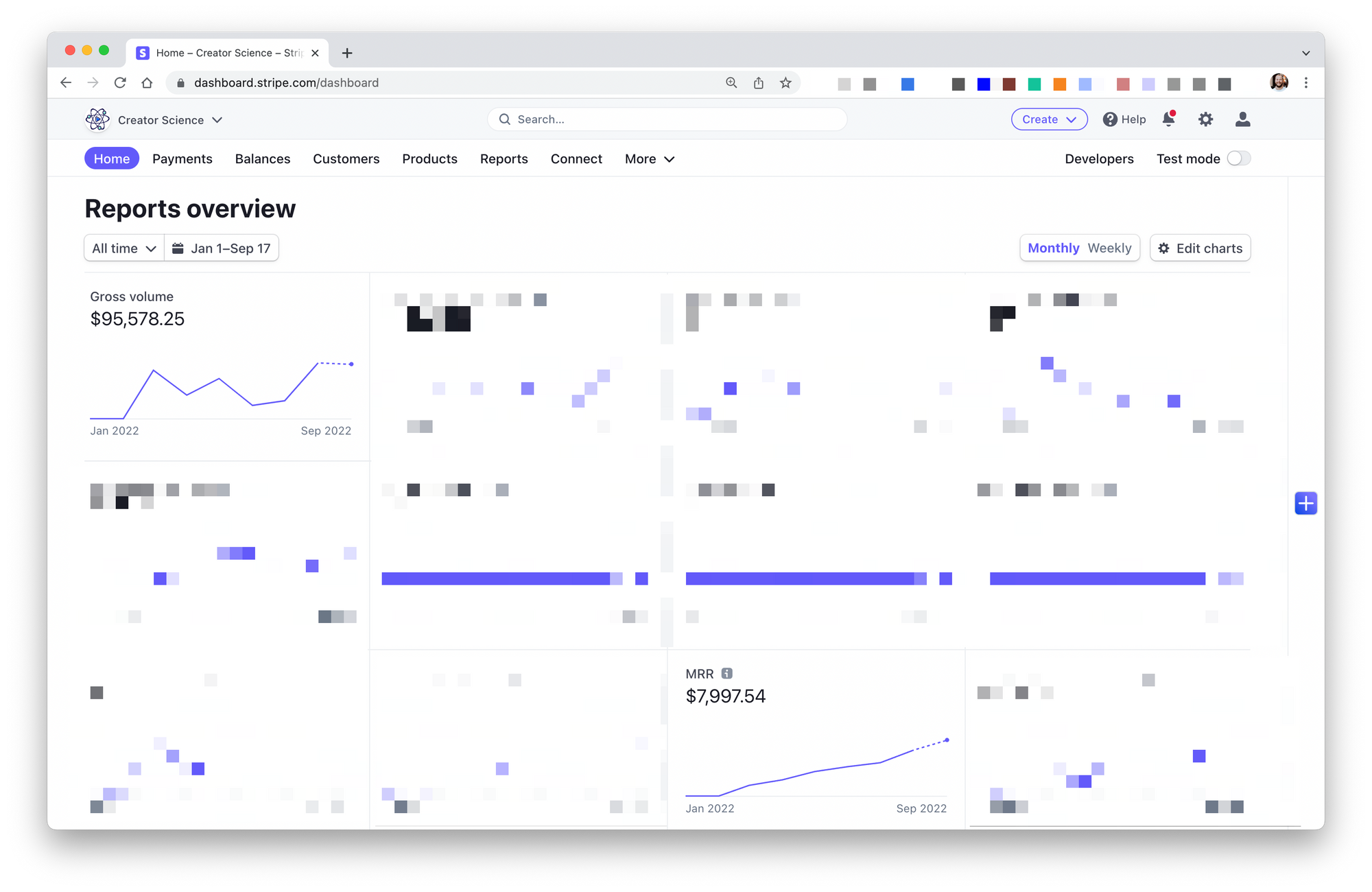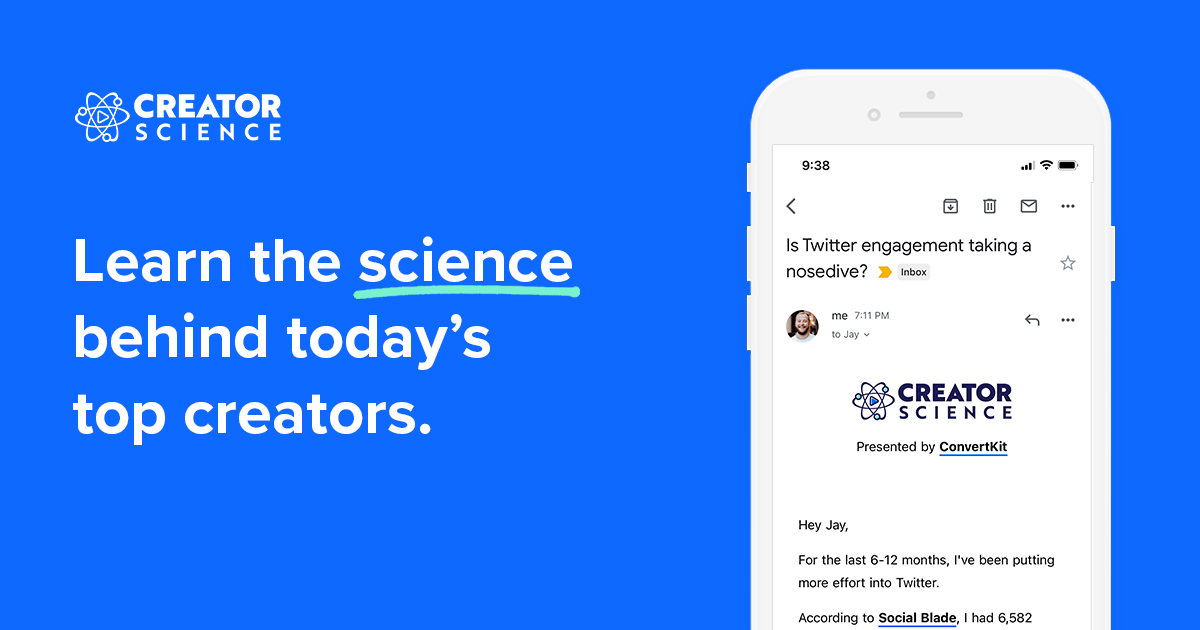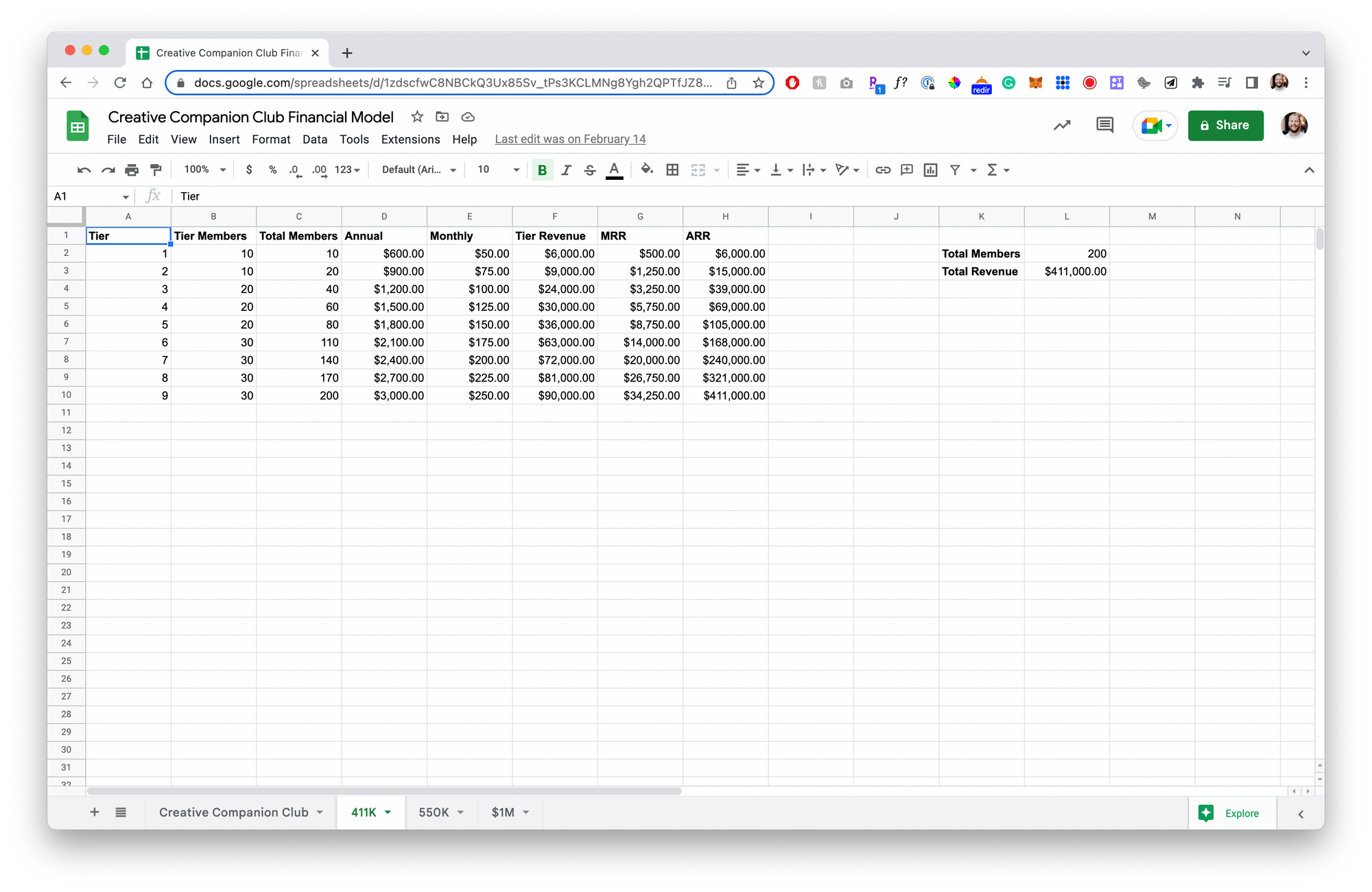I launched my membership community, The Lab, in March of this year.
In just 6 months, it has:
- gained 135 members
- generated $96K
- nearly doubled my business
- become my favorite place on the internet

Despite having such a huge, immediate impact on my business – I've actually made the decision that I'm going to keep The Lab small.
The community will not exceed 200 active members.
I've shared this with a lot of people this week, including the whole Twitterverse, and the response has been overwhelmingly positive (especially from members):
A creator who is doing community & membership RIGHT.
— ⚡ Dylan Redekop || Newsletter Strategist 💙💛 (@growthcurrency) September 15, 2022
I respect Jay's business acumen, and he could make even more money.
But he's capping his earnings.
On purpose.
So much respect. https://t.co/wrbWY8hjdn
But, privately, I've gotten a lot of questions about why I would throttle the growth and potential of my "cash cow."
So I wanted to break down why I've decided to keep The Lab small and why it might be a model for other membership communities to consider.
Maintaining Closeness
The magic of The Lab is how close people feel to one another.
One thing I do with every new member of The Lab is offer a personal welcome call. Thirty minutes between just the two of us.
By the time we get on that call, typically the new member has has a week or two to experience the community...and almost without fail, they'll say something like:
"I can't believe how active this community actually is!"
And it's true – compared to other communities I've been a part of, this community does feel exceptionally active in both 1.) starting conversations and 2.) contributing to them in a timely fashion.
Take it from our analytics:

No crazy spikes, just consistent, sustained growth.
The reason we see sustained growth in engagement is simple – members feel a closeness to one another.
Members of The Lab form real relationships and want to see each other succeed. Not only do they want others to succeed – they even feel a responsibility to help them.
They also know the community is where they'll keep up with and learn from their friends, so they keep checking in.
Creators love to blame their lack of community engagement on all kinds of things:
- The technology
- The season
- Nice weather
They'll blame anyone and anything but themselves. But the reality is, if you suffer from low engagement, it's because you aren't fostering a community that has closeness.
We are social creatures. We thrive off of interaction more than anything else (social media dopamine hits, anyone?).
If your community made it easy and gratifying to interact...if it was a place real social bonds were being created on a consistent basis...engagement wouldn't be an issue. People will go out of their way and endure painful user experiences simply to experience the magical social experience your community provides.
And I see so many communities start off strong – because it's easier to create closeness when you have fewer people to create bridges between.
But, inevitably, as we chase growth, we do so at the cost of integrating new members with existing members. Suddenly, this close-knit community has doubled in size and it no longer feels close at all – strangers outnumber the elders!
A community culture is co-created with your members. It starts with you but, soon after, your members begin contributing to it. Suddenly, it's not just YOU spreading that culture, but it moves between members based on their interactions.
When new members come in, they need to learn that culture. They learn it from existing members. But if they are surrounded with as many (or more) new members as they are existing members, they may not learn that culture.
Conflicting subcultures develop.
The core culture erodes.
And, suddenly, the very fabric of your community has changed.
Again, this is not intentional. But it's a slippery slope that is tough to avoid if you're focused on growth.
I've been a part of large communities and even run large communities! It's difficult to maintain closeness as a community grows.
But when you maintain closeness, you create trust. Trust deepens and creates a sense of psychological safety. I know most of the people who will read this post, so I feel safe making it.
And when people feel psychologically safe, they'll not only start more discussions, but those discussions will have more depth and differentiation in relation to social media or other communities.
More depth provides more insight and your community becomes more valuable.
Protecting Member Experience
I think a lot about the member experience – how does being a member of this community feel to the individual?
You want the member experience to feel gratifying. When a member decides to invest time and attention into the community, they should feel a sense of pleasure and gratitude that they made that choice.
As communities grow, not only can they easily lose closeness, but it can also become quite noisy.
Both factors damage member experience.
A lot of people who join communities (i.e. people who value growth and improvement) are Type-A personalities. They want to feel like they're "on top of" everything. They want to feel like they're up to date and "keeping up with" everything going on in a community.
This is actually a great thing when your community is relatively small – these people are just as on-top of things as you are as a community builder! They can help share the load, answer questions, provide support, etc.
They are a driving force of creating closeness and spreading the culture.
But the bigger your community becomes, the more user-generated content it will contain.
More posts. More comments. More direct messages.
For anyone who isn't YOU (the community builder) it just becomes too much.
When people feel overwhelmed by a community, they will often disengage entirely.
You may see your best, most active members suddenly ghost on your community and you'll wonder, "What happened?"
Well, when people can't "perform" to the standard they hold themselves to, they will declare bankrupty and disappear. It's the easiest way out.
At a high level, I haven't found a perfect solution for this for larger communities. There will likely always be global spaces within the community where any member of the community can post. And if even just 2% of your members make a new post per day, that will add up as your community scales.
Yes, you can create small groups. You can coach your members on how to refine their notifications. You can remind people that they aren't superhuman and WON'T, in fact, keep up with everything.
...but that doesn't mean people will listen.
So as people begin to feel overwhelmed, they also feel less and less responsible for the other members in the community. They've probably already lost closeness, they can't give to ALL of these people...so they disengage.
Suddenly there's less talking to people and more talking at people.
This creates a downward spiral and members start spending less and less time in that community. You start to see lots of new posts with zero comments on them, and despite having more members than ever, the time to receiving a helpful response gets longer and longer.
"Maybe this isn't the best place for me to seek help."
Managing My Capacity
Right now, I think we're still in the early stages of the community hype cycle. More and more people are moving to create communities every day, but this trend won't last forever.
As I shared in my community predictions from March, I believe people will reduce the number of communities they are personally active in down to one, maybe two.

When I consult with creators who are starting their own communities, they often tell me they can't commit much time to managing or even being in the community.
And that's OK, especially if you can hire or direct a team of people to manage and foster that community on your behalf. It won't be as great as it would if you were active as the creator...but it's still doable.
As long as the creator (the lightning rod that attracted people to the community) is involved in some capacity (infrequent live events, periodic posts, etc.) then I think you'll be fine.
But community is going to be a tough business model to sustain over the long-term. The hype will wear off and people will feel stretched thin by too many communities.
I think the communities that endure will be differentiated by the access they provide to a.) individuals and b.) the unique experience and insight of those individuals.
So an explicit, major part of The Lab is my personal involvement. I have a 30-minute personal welcome call with every new member. I'm on every live session. I host 1:1 coaching sessions and I answer nearly every post that comes in.
If the community grew bigger and bigger, I couldn't sustain that.
I love being able to meet 1:1 with every new member. Not only is it incredible customer research, but I can meaningfully help and direct them immediately after they join. And if they haven't finished onboarding, I remind them. If they haven't introduced themselves, I remind them.
If they've already done all of that, they basically get a 30-minute coaching session.
I want to invest significant time and energy into every member of the community – not just after they join, but for the life of their membership.
I can't tell you how many creators I've purchased things from and never heard from again post-purchase.
This investment of time would be impossible at scale. Even if I put all of my working time into supporting The Lab, I would hit an eventual limit.
And I don't want to put all of my working time into supporting The Lab.
I'm a full-time creator publishing weekly essays, twice weekly newsletters, weekly podcast and YouTube episodes, and more.
To support the community full time, I would have to reduce my own creative output. And in doing that, I'll lose my unique hands-on insight. Even worse, I could start to resent this part of my business.
"Enough" Economics
Knowing that The Lab was a part of my business and not what I wanted to be my full business, I spent a lot of time pre-launch thinking through the financials.
From the beginning, I designed the economics to support this approach.
In fact, I spent several weeks just playing with a spreadsheet thinking through what the community would look like at different price points and sizes.
Here's a video I recorded in December 2021 as I was starting to plan this community (three months pre-launch):
You can see that even then, I was playing around with a 200-person limit. And what I really liked was gradual price increases so that the earlier members joined, the better their pricing would be.
Inspired by my interview with Steph Smith, I was thinking about pretty consistent price increases:

🔗 You can make a copy of this sheet here.
I decided that this many price increases were too difficult to message and manage technically. So, instead, I determined a base price ($999/yr for Standard and $1999/yr for VIP) and offered early adopters a 50% discount on that price.
Then about two weeks ago, I implemented my first true price increase:
Standard: $999 → $1499/yr
VIP: $1999 → $2499/yr
I'll talk more about my decision to offer annual-only pricing here in a minute. But one interesting consequence is that I don't have any monthly recurring revenue – if I want to continue earning as much as I do each month, I need to attract new members.
But people can join at any time – I don't do an open-and-closed launch model. So when play that model forward a full year, I will actually experience something close to MRR in year two of the community without needing to attract new members.
If I hold these prices through the 200-member cap, I could expect to earn an additional $97K-$162K in annual membership fees (a total ARR of $200K-$350K for The Lab as a product). But, most likely, I'll introduce at least one more price increase before we reach our 200-member cap.
That ARR will also increase over time as early adopters choose not to renew and their spots are opened up to new members at the regular price.
Not bad for one arm of my business!
But let me be clear – this works because of a few key decisions:
- I selected a high price point
- I only offer a full-year membership option
- Those two choices both align with and are possible for my avatar (more advanced creators)
So by maintaining both a premium price point and annual-only membership options, the community earns enough revenue to incentivize me to invest significant time – and has done so since the beginning!
That's really important – because a lot of creators will launch a community with a very low price point as well as monthly membership options. That's a tough game to play – it takes a lot of volume to feel properly compensated for your time. And if you're lucky enough to get that volume, you already have challenges in maintaining closeness.
With my model, not only does the community compensate me for my time, but it also provides enough revenue to hire admin help if I choose to.
Aligning Long-Term Incentives
It's really important to me that I align long-term incentives between me and the members of The Lab.
The unfortunate reality I see for most creators is that they optimize everything they can up to the point of sale in order to maximize revenue.
But after the point of sale, the customer is totally on their own to extract value from that thing (this is why course completion rates are so low).
This is even worse in the world of community where the product is a little more choose-your-own-adventure and often requires more work on the part of the customer to extract value.
So there's this misalignment of incentives – the creator extracts all value at the point of sale and then is no longer compensated through the life of the membership – at least that's what it feels like for most annual-only or one-time purchase communities.
This is actually a big positive argument for monthly memberships – it really forces you to create and show value month over month.
But in most cases, the customer has taken all the risk by providing cash up front, but has not yet extracted their value. Their value comes in the long-tail of their time in the community – the time spent building closeness, building relationships, and learning from the creator. But, unfortunately, a lot of creators kind of leave members to sink or swim after the point of sale and value is never recognized.
This leads to a lot of churn (members deciding to not renew) – and quickly.
Churn in a community is much worse than churn for a software company, because the members themselves play a role in the product quality. So when members leave, your actual product (the member experience) actually becomes worse.
So, for The Lab, I focus on member retention.
I only offer an annual membership option because I think it'll be better for retention. My bet is that it'll be easier to convince someone they've extracted commensurate value with their payment one time per year instead of 12 consecutive times.
The reality is, whenever you create the opportunity for churn, some churn will happen.
So if you create 12 opportunities for churn for each member per year, a lot of members are going to take you up on that and head towards the door!
As a result of members all being in The Lab for at least a year by default, there's a better chance I can build closeness between members.
I even offer an affiliate program for members to refer others – the affiliates earn 25% of membership fees including every year the member renews.
So not only are members incentivized to spread the good word, but they're incentivized to make the community great to people stick around. I've already paid out $10,000 this year in affiliate fees alone.
And I think capping membership at 200 members will actually have a positive impact on retention too. Anyone can opt out of the community at any time, but once we have 200 members, people can only opt-in once someone decides to not renew. That will make getting back into the community tough – either for a new members or returning members.
Pioneering A New Model
A big reason I named the community "The Lab" is because it's about members running experiments together and sharing the results.
The Lab itself is my biggest experiment.
Everything that I do inside The Lab is intended to create a gold standard of premium membership communities. I'm constantly trying new things and adding on little bits of awesome to try and blow members' minds.
Last year, I spent a good amount of time digging into Web3 and NFTs. Candidly, I think most of that is still just technology looking for a problem. But one of the most interesting use cases for NFTs is using them as membership tokens.
Gating access to a community through a limited number of membership tokens even further aligns incentives for the community. As the community builds a reputation as a place other people want to be, supply and demand economics take over. Instead of me setting a price for membership, the market dictates the price. And if a member becomes inactive, but sees a market demand for access, they can actually sell their access token and recoup their investment.
In that world, purchasing membership into a community isn't a cost – it's an asset. By building a vibrant community, you can actually generate a financial reward that your members share in the upside.
I'm not ready to go down that path yet...but it's definitely an avenue I'll explore.
Conclusion
From the beginning, I've intended to build The Lab to be a unique community membership
It's meant to be a remarkable community that does things differently in the service of its members. I'm using it to try different models than most other people.
And, ultimately, capping membership at 200 total members is a decision that I think creates a huge benefit for everyone. Not only does it protect the member experience, but also my capacity (and sanity) as a creator.
Learn My Method
Want to learn everything I know about building a great membership community?
I just opened the presale for my newest course, Build A Beloved Membership. This course will cover everything I've learned about building a paid membership community and presale pricing will save you 25%.
Learn more and enroll here:

The course is in production now and will be delivered by November 1, 2022.
It will be provided as a complimentary benefit to being a member of The Lab! So if you're a member of The Lab already, you'll receive the course at no additional cost. If you're not a member, consider joining today.



Join 54,000+ creators learning from firsthand experiments, expert interviews, and actionable advice every week.